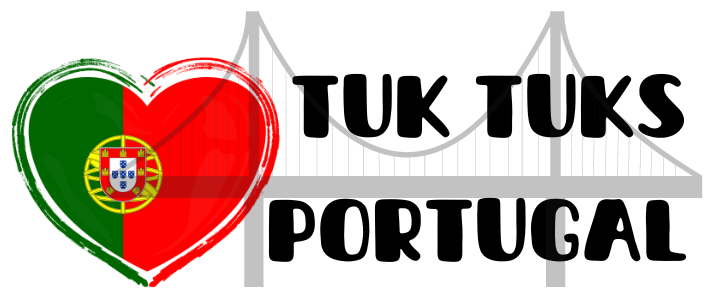Museu Calouste Gulbenkian: Cultural Gem
The Museu Calouste Gulbenkian is a cultural gem located in Lisbon, Portugal. It is named after its founder, Calouste Gulbenkian, and showcases a diverse collection of art and artifacts from various time periods and regions.
A Brief History of the Calouste Gulbenkian Museum
The museum’s history dates back to the early 20th century when Calouste Gulbenkian, an Armenian businessman and philanthropist, began amassing an extensive art collection. Gulbenkian had a passion for art and a deep appreciation for culture, which led him to acquire a wide range of pieces from around the world.
The Life and Legacy of Calouste Gulbenkian
Calouste Gulbenkian was born in 1869 in Istanbul, Turkey, to Armenian parents. He was a prominent figure in the oil industry and played a significant role in the development of the Middle Eastern oil industry. Gulbenkian’s wealth allowed him to pursue his love for art and create an extraordinary collection that spans various periods and styles.
Establishment of the Museum
In his will, Calouste Gulbenkian left his art collection and his vast fortune to be used for the benefit of the public. This led to the establishment of the Museu Calouste Gulbenkian in 1969, ten years after his death. The museum was designed by architects Alberto Pessoa, Pedro Cid, and Ruy Jervis d’Athouguia, and it quickly became one of Portugal’s most important cultural institutions.
An Overview of the Museum’s Collection
The Museu Calouste Gulbenkian is home to a diverse collection of art, spanning multiple continents and centuries. The collection is divided into three main areas: the European Art Collection, the Oriental and Classical Art Collection, and the Modern Art and René Lalique Collection.
European Art Collection
The European Art Collection includes paintings, sculptures, and decorative arts from various European countries. It features works by renowned artists such as Rembrandt, Rubens, Renoir, and Monet, among others. The collection provides a comprehensive overview of European art history.
Oriental and Classical Art Collection
The Oriental and Classical Art Collection showcases a wide range of art and artifacts from ancient civilizations, including Egypt, Greece, Rome, and the Islamic world. Visitors can explore sculptures, ceramics, jewelry, and textiles that offer insights into these rich cultural traditions.
Modern Art and René Lalique Collection
The Modern Art and René Lalique Collection focuses on 20th-century art and design. It includes works by renowned artists such as Picasso, Mondrian, and René Lalique, a master of glass and jewelry design. This collection highlights the innovative and avant-garde movements of the modern era.
Exploring the Calouste Gulbenkian Garden
Adjacent to the museum is the Calouste Gulbenkian Garden, a serene and beautifully landscaped space. The garden provides a peaceful escape from the bustling city and offers visitors an opportunity to engage with nature.
Outdoor Sculptures and Water Features
The garden is adorned with numerous outdoor sculptures and water features that add to its aesthetic appeal. These art installations create a harmonious blend of nature and human creativity, making the garden a unique and captivating experience.
Plant Species and Landscaping
The Calouste Gulbenkian Garden is home to a wide variety of plant species, including native and exotic plants. The carefully designed landscaping creates a tranquil environment, with winding pathways, shaded areas, and open spaces for visitors to explore and enjoy.
Educational Programs and Cultural Events
The Museu Calouste Gulbenkian offers a range of educational programs and cultural events to enrich visitors’ experiences and promote a deeper understanding of art and culture.
Temporary Exhibitions
The museum regularly hosts temporary exhibitions that showcase specific themes, artists, or periods. These exhibitions provide a chance to explore a particular aspect of art in greater depth and often feature loans from other renowned institutions around the world.
Lectures, Workshops, and Guided Tours
In addition to exhibitions, the museum organizes lectures, workshops, and guided tours. These educational activities cater to different age groups and interests, allowing visitors to engage with the collection and learn from experts in the field.
Film Screenings and Concerts
The Museu Calouste Gulbenkian also hosts film screenings and concerts that celebrate various art forms. These events provide a platform for emerging artists and offer visitors a chance to experience art in a different context.
Visitor Information: Hours, Tickets, and Accessibility
If you’re planning a visit to the Museu Calouste Gulbenkian, here’s some important information to help you plan your trip.
Planning Your Visit
The museum is open from Tuesday to Sunday, from 10 am to 6 pm. It is closed on Mondays and on certain public holidays. It is advisable to check the museum’s website for any updates or changes to the opening hours.
Tickets can be purchased online in advance or at the museum’s ticket office. The museum offers discounted tickets for students, seniors, and groups. Children under the age of 12 can enter for free.
The Museu Calouste Gulbenkian is wheelchair accessible, with ramps and elevators available. The museum also provides audio guides and descriptive brochures for visually impaired visitors.
